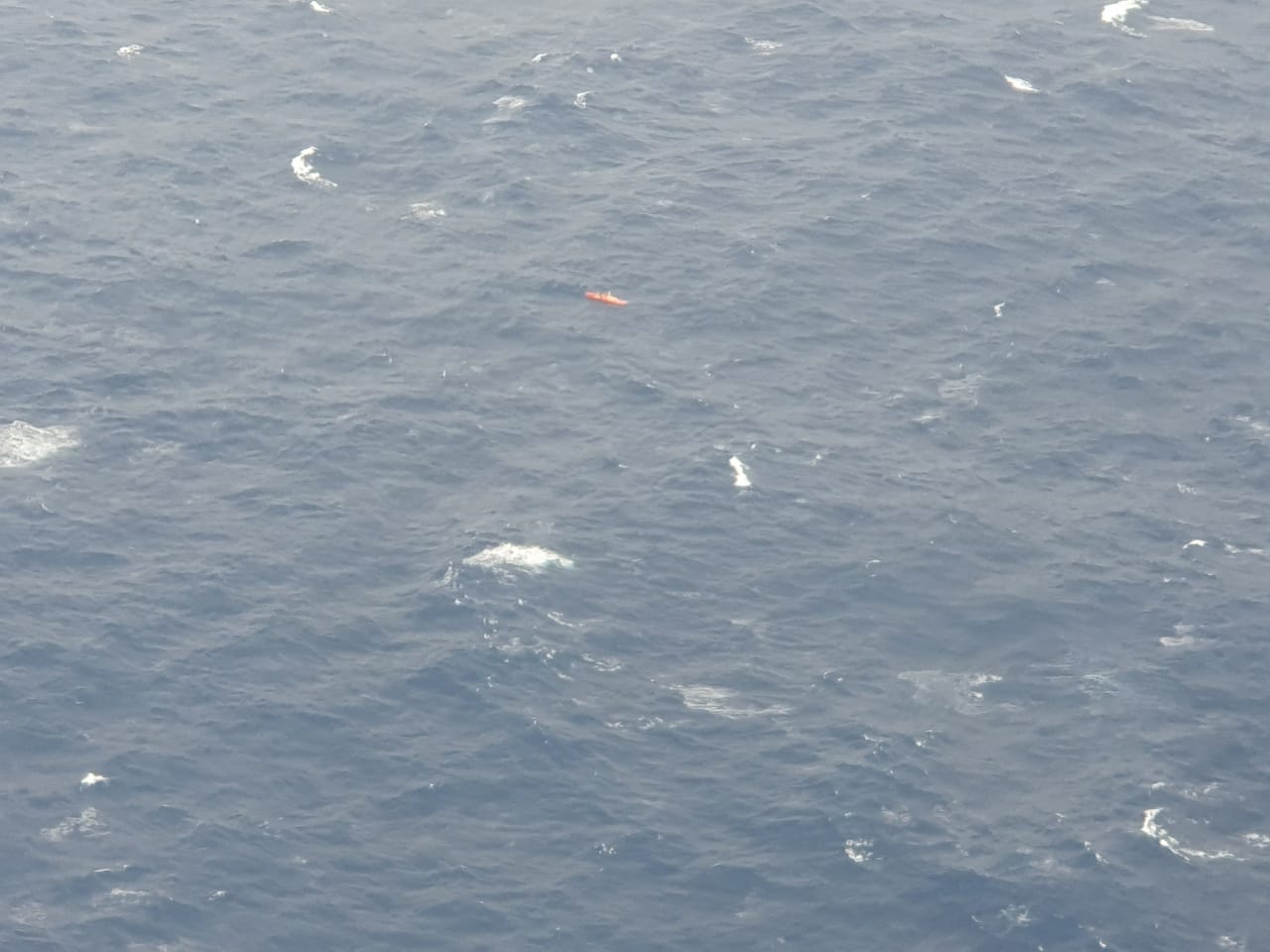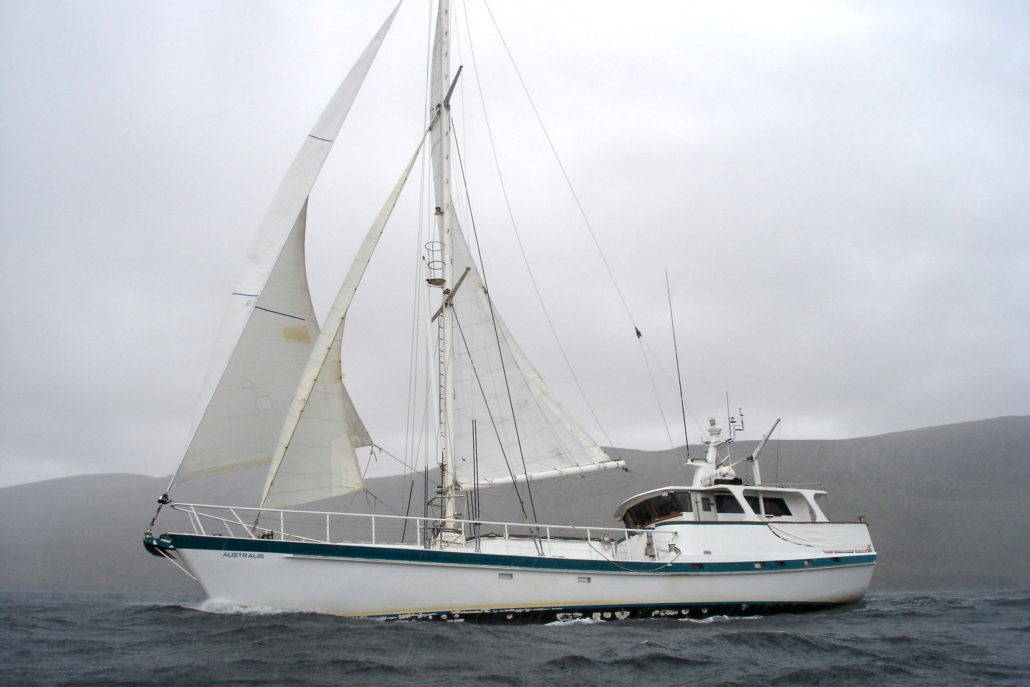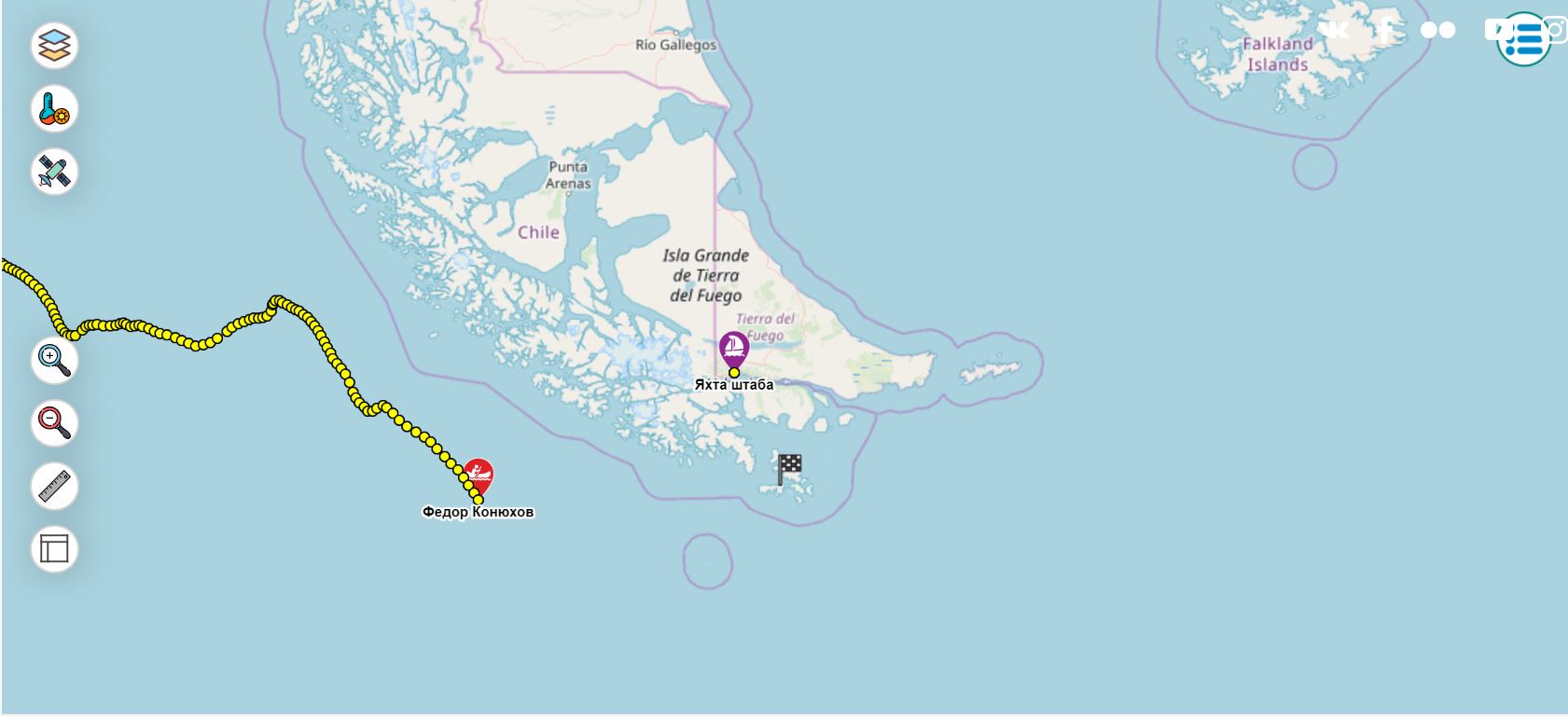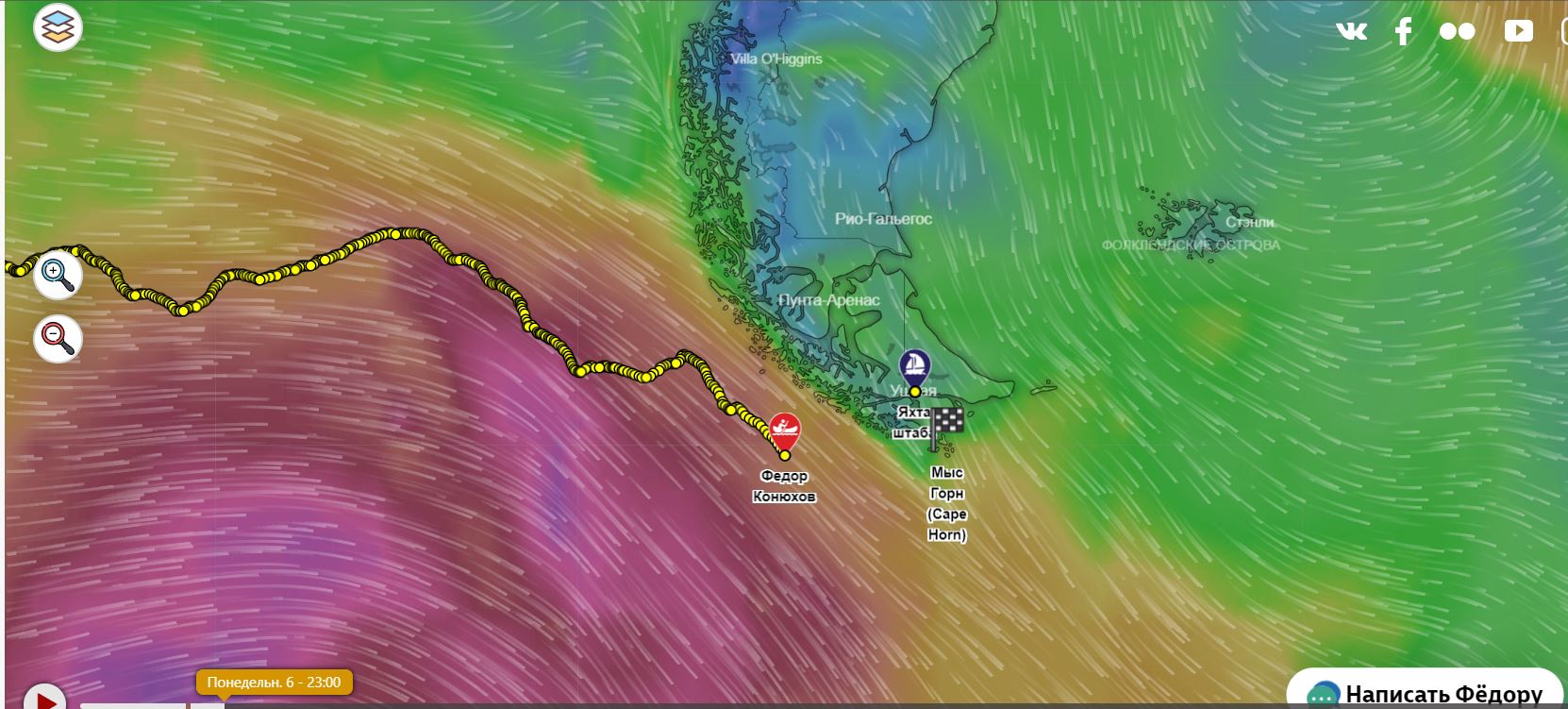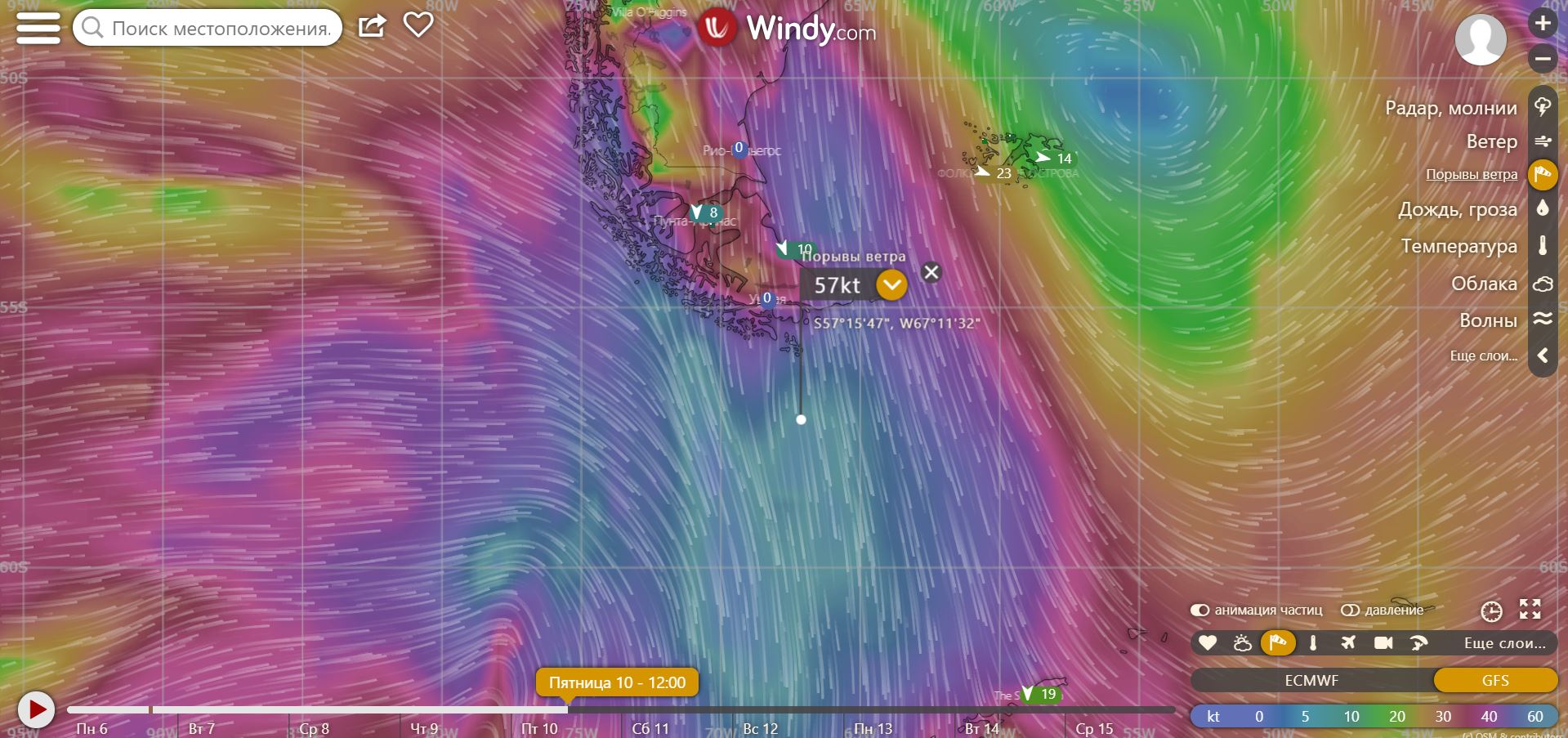Day 151. We have passed the latitude of Cape Horn!
The rowboat “AKROS” has crossed the latitude of Cape Horn! It is a significant event for Fedor Konyukhov and for the whole project. The boat has crossed 56 degrees South. It is 170 nautical miles to the legendary Cape, and only 90 nautical miles to the Diego Ramirez Islands, the first islands on the course.
The boat is continuing its approach to the Drake Passage and Cape Horn in stormy weather. The wind is 35 knots and the waves are 7 metres. According to the forecast, the wind will intensify to 45 knots (90 kilometres per hour). It is in such weather that he will be forced to traverse Cape Horn.
In the morning of 7 May three yachts: the Australis (Australia), Sarah Vorverk (The Netherlands) and the Lady Mary (Russia) together with representatives of the project team and the media as well as journalists from the Russian Channel 1, will embark from the port of Ushuaia into the Beagle Canal, heading for Cape Horn. First, we must enter the Chilean port of Puerto Williams in order to complete all of the immigration formalities and receive permission to pass into Chile’s internal waterways.
On this very day, 7 May, the flotilla of yachts will head from Puerto Williams in the direction of Falso Cabo de Hornos. On the leeward side of that island is a bay suitable for the yachts to drop anchor.
Aboard the yacht Australis, where the project’s mobile headquarters is situated, is an Iridium 360 satellite buoy similar to the buoy which has been automatically transmitting the coordinates of the rowboat “AKROS” for the last 151 days. After tomorrow we will be able to observe the yacht and the boat drawing closer.
The project has the full support and cooperation of the Argentine and Chilean authorities. All officials and departments in the region know about Fedor Konyukhov’s expedition and are carefully following the developing situation. The Armada de Chile is planning to send a patrol ship to Cape Horn as well as a helicopter, weather permitting.
The approximate time of the crossing of the Cape Horn meridian is the second half of the day on 9 May. What will follow is a procedure to take the boat into tow with 6 metre waves and 60-70 kilometre per hour winds. It is a complicated and dangerous task. It is possible that the yachts will have to escort the boat for several days before the weather will permit them to approach and organise to tow.
If we can’t take Fedor’s boat into tow on 9 May, we will have to delay the operation for several days. The weather on 10 May will deteriorate into hurricane conditions, with winds blowing from shore reaching 60 knots. In such conditions not only will we not be able to bring the boat into tow, but all yachts will need to take shelter ashore and weather the storm, while Fedor’s boat drifts South toward Antarctica. 9 May is the decisive day. We have half a day to find the “AKROS” and tow it ashore to Chile to take cover from the storms forecast for 10 May.
Fedor says: “The weather is very difficult. You get the sense that you are in a barrel being thrown from a waterfall, except in that case you would fall for a minute, here it is weeks and months. Waves on the continental shelf are very different from those in the open ocean. The ocean tears the waves apart and there is salt dust in the air. The waves are short and smash against the boat’s hull. The boat cracks and twists. The main thing is that it withstands being struck by the waves Inside the cabin all you can hear is the roar of the waves. It is impossible to yell over it, and impossible to talk on the phone. I can only send text messages. It’s going to be a rough approach to Cape Horn, but to look on the bright side, the wind is fairly favourable – it is taking me along the coast instead of into it. It is 170 miles to Cape Horn.”
